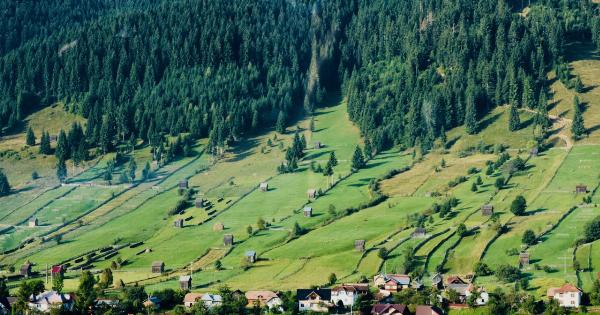With the increasing demand for agricultural products, it is more important than ever to protect agricultural land. Farmers and landowners who own agricultural land often face various challenges that endanger their livelihoods.
Agricultural protection plans are essential for safeguarding agricultural land from environmental devastation, overdevelopment, and other threats.
Types of Agricultural Protection Plans
There are various agricultural protection plans that farmers and landowners can implement to protect their land. Some of the most common types include:.
Conservation Easements
Conservation easements are agreements between landowners and conservation organizations that place restrictions on land use to protect the environment, wildlife habitats, and cultural resources.
The agreement runs with the land, and subsequent landowners are bound by the same restrictions.
Agricultural Zoning
Agricultural zoning is a type of land-use regulation that sets aside designated areas for agriculture. Agricultural zoning laws protect farmlands from competing land uses, such as commercial and industrial developments.
Farmland Preservation Programs
Farmland preservation programs are state and local government initiatives that compensate farmers for not developing their land. The program is designed to prevent farmers from being forced to sell their land for development purposes.
Wetlands Protection Plans
Wetlands are critical habitats that provide a home for various species of plants and animals.
Wetlands protection plans are designed to protect these important ecosystems from adverse impacts such as mining, logging, and other activities that release pollutants.
Environmental Farm Plans
Environmental farm plans are voluntary programs that help farmers identify and manage environmental risks on their farms. The plans provide guidelines for managing soil, water, air quality, and biodiversity on farms.
Benefits of Agricultural Protection Plans
Agricultural protection plans provide various benefits to farmers, landowners, and the general community. Some of these benefits include:.
Preserve Agricultural Land
Protection plans help preserve agricultural land for farming purposes only. It prevents commercial and industrial development from encroaching on farmland, which can lead to widespread soil degradation and environmental pollution.
Wildlife Habitat Conservation
Some protection plans, such as conservation easements and wetland protection plans, help protect wildlife habitats from destruction. This benefits wildlife populations and contributes to the conservation of biodiversity.
Food Security
Agricultural protection plans encourage the continuity of farming practices, helping to maintain a steady supply of food. It supports the local food supply chain, which benefits the local economy and provides food security for the community.
Economic Benefits
Protection plans help promote sustainable agriculture, preserve scenic views, protect cultural heritage, and enhance eco-tourism. It supports the local economy by creating jobs and increasing tax revenues.
Conclusion
Agricultural landowners face various challenges that threaten their livelihoods.
Agricultural protection plans such as conservation easements, agricultural zoning laws, farmland preservation programs, wetland protection plans, and environmental farm plans help protect land from environmental degradation and overdevelopment. Agricultural protection plans provide various benefits, including preserving agricultural land, conserving wildlife habitats, ensuring food security, and promoting sustainable agriculture.



























